"Film of picturesque scenes of water." Library and Archives Canada.
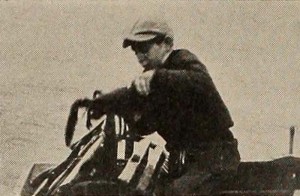
"The story, older than the craft of lobster fishing, of a ten year old boy earning his own first few pennies is told beautifully and sensitively in Riches from the Sea, by T. J. Courtney. As simple and human as the life of those it pictures, this film captures the spirit of the young fisher boy as he goes about his work of baiting and dropping lobster pots. They are his own, just given by his father. The money he makes from selling the lobsters he catches, some of which he boils on the beach, is also his own. Finally, when the last one is purchased by tourists along the dusty road and the boy races to the village, clutching his coins, to buy the coveted store window toy, the picture swells to its climax, fully equal to the importance of the occasion in the youngster's life. Lovely angles and expert composition bring beauty in black and white to the photography, and the acting, by Philip Boutilier and his little sister Lorraine, of Seabright, Nova Scotia, is unaffected and agreeable. This photoplay illustrates how completely the locale and life of an interesting community can be conveyed by threading it on a simple story of human nature." Movie Makers, Dec. 1938, 597.
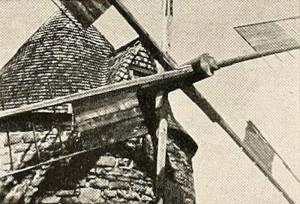
"The majesty of one of North America's greatest rivers is the theme of Walter Downs's Saga of the St. Lawrence. Stunning Kodachrome views of this mighty stream picture it from the decks of a river steamer. The ship is used as a mechanism for carrying the continuity theme forward and for providing smooth "trucking" shots of the passing shoreline. Brief stops offered the opportunity for sequences that show the character of the country and its people with the sympathy and understanding of one who knows the region well. These also punctuated the film in a pleasant and interesting fashion. The picture is accompanied by a musical background and some sound effects, all done by double turntable. This is a gracious and capable film of high photographic quality." Movie Makers, Dec. 1937, 630.
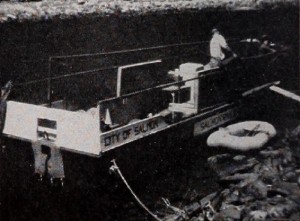
"Spanning the upper and narrower part of the State of Idaho from east to west, the Salmon River provides the original blueprint for one-way traffic. You either end up in western Idaho — or at the bottom of the river. Frank E. Gunnell ended up in Idaho. His coverage of this adventurous journey in The Salmon — River Of No Return is complete, carefully planned and splendidly competent. One becomes thoroughly familiar with the great, flat-bottomed barge, guided by giant sweeps fore and aft, in which the hazardous rapids of the Salmon are surmounted. One is charmed, even fascinated, by the deserted mining huts along the river and the few forlorn characters who still live amid this rocky wilderness. The Salmon — River Of No Return is a leisurely and well made record of a unique vacation adventure." Movie Makers, Dec. 1948, 492.
Travelogue and social gathering document. Narrated by Joan Baldwin with orchestral music by Sibelius throughout. "Only 50 people lived here last winter and 12 children attend the school. Fishing..." oldfilm.org
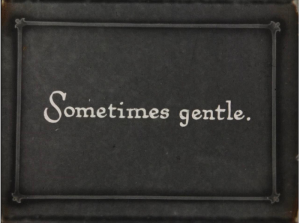
"Third prize in the non-dramatic division was given to Hiram Percy Maxim, of 276 North Whitley Street, Hartford, Conn., for his beautiful scenic, "The Sea." Mr. Maxim submitted four 16 millimeter films in the contest and another of these, "Summer," was awarded an honorable mention. Mr. Maxim is the pioneer president of the Amateur Cinema League and a national leader in amateur cinematography." Photoplay, Nov. 1929, 86
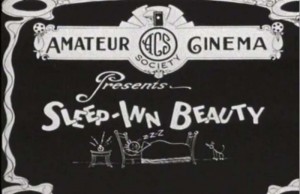
"SleepInn Beauty is a comedy situated around a bathing beauty contest based on a story adapted by Dorothea Mitchell. Filmed over two days North of Port Arthur near Mitchell's camp at Surprise Lake, Wally McComber (the "Goof" of A Race for Ties) played the leading man and Maye Flatt, the leading lady. Fred Cooper shared the photography duties with Lloyd Small and took a minor acting role. In addition, over sixty extras were bussed in from Port Arthur to take part. The film was never exhibited publicly although, considering Mitchell's efforts with A Race for Ties, it was most certainly shown privately." Ladylumberjack.ca
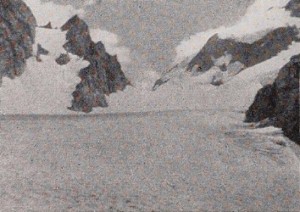
"The Blue refers to a glacier of majestic proportions high in the Olympic Mountains of northern Washington. Solduc, a small station in the Hoh Valley, is the point from which Theodore H. Sarchin and his two companions set out with high hopes to conquer the formidable ascent to the famous ice fields. Although they reach the Blue, the sun has been there first, softening the ice, and they must turn back without having attained the summit. Inherent in the film is a deep reverence for the wild, inspiring beauty of the scene, which clearly communicates itself to the audience — no small achievement in an amateur travel study. This reverence never becomes mawkish, the pedestrian titles and homely incidents en route nicely counterbalancing it. Superior camera work makes the most of the setting, while skillful editing combined the best elements of story and scene to make a dramatic presentation. An expertly scored musical accompaniment adds impressively to enjoyment of Solduc To The Blue." Movie Makers, Dec. 1948, 492.
"This picture was a finely photographed record of water from the ocean to the clouds and back to the ocean again through its various stages. His photography rated high." American Cinematographer, Dec. 1934, 377.
"The one reel film, Water, is a pleasant blending of plan and montage. In it, Howard Demarest, ACL, has traced what may be termed the life cycle of water — from its restless abundance in the great oceans, its radiant journey to banking clouds, the return in rainfall, until, through the coursing of streams and rivers, it blends once more in the sea. Parts of this great, natural continuity Mr. Demarest had on film before the present picture was definitely conceived. Other parts he made following the conception, sometimes to fill it out, again to improve it with retakes. In all these deftly integrated sequences his photography is consistently crisp, sparkling and steady. In many of the scenic views it approaches perfection in beauty of composition and lighting. Attractive and well worded titles round out a piece of work that is definitely superior." Movie Makers, Dec. 1933, 522.
An artistic interpretation of various natural environments.
Total Pages: 11